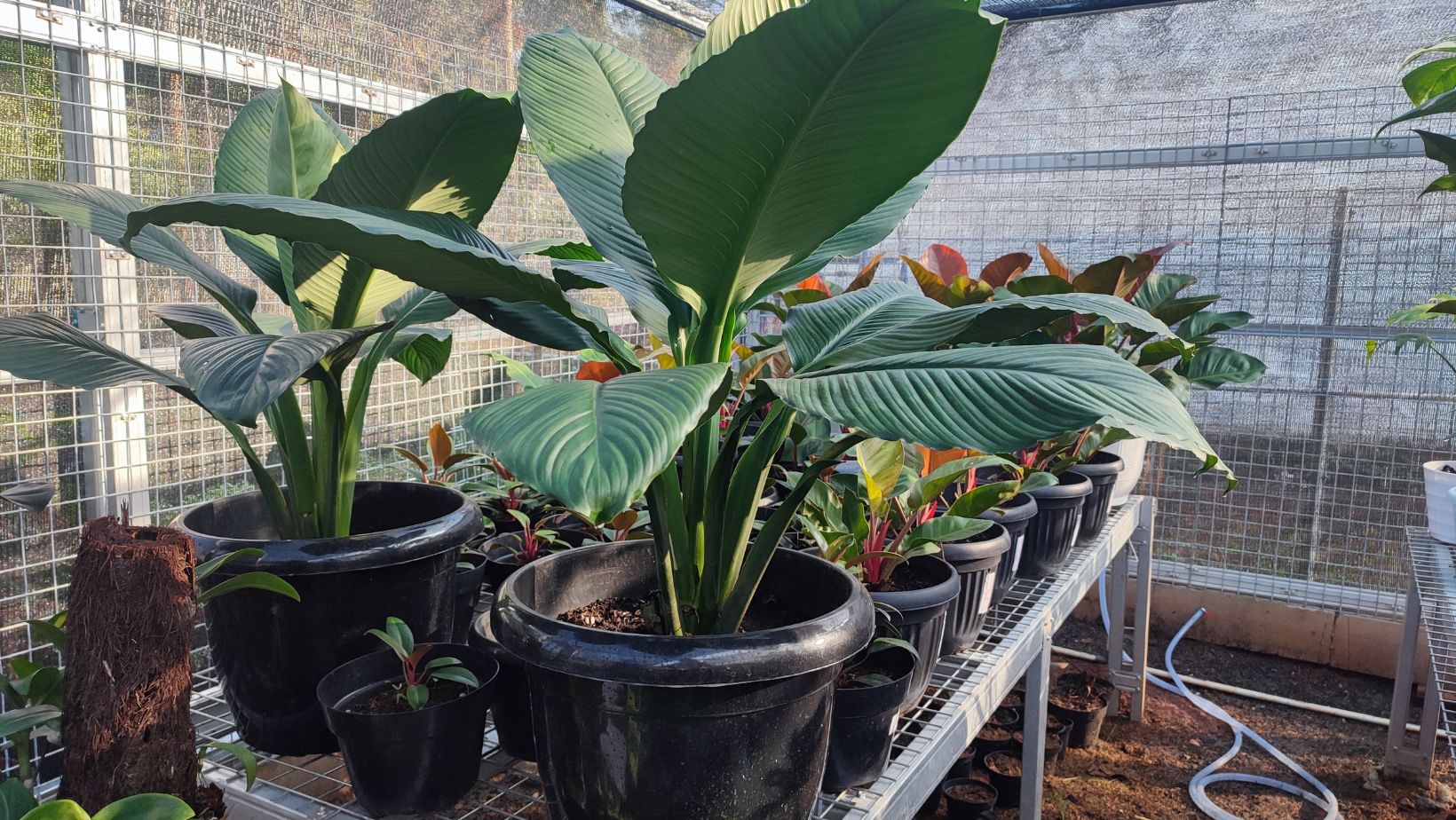If you've seen a plant with gigantic, elegant leaves that look like it came straight out of a tropical jungle, it's probably the Strelitzia Nicolai, also known as the giant bird of paradise. This exotic-looking plant has become an essential decorative element for those looking for a natural and sophisticated atmosphere in their home. Although we don't sell it at Persa Flores, we know that many people love it, so we're sharing this complete guide to caring for it with you.
1. Meet the Strelitzia Nicolai
Strelitzia Nicolai is distinguished from Strelitzia reginae (the common bird of paradise) mainly by its size and its flowers. While the reginae produces vibrantly colored flowers, the Nicolai develops white and blue flowers, less showy, but just as captivating. Its large, elongated leaves, similar to those of the banana plant, bring a tropical air to any space.
This plant can reach 2 to 3 meters in height indoors, and outdoors, it can exceed 10 meters. Therefore, if you have it at home, make sure to give it enough space to grow and become the queen of the room.
2. Where to place Strelitzia Nicolai?
The ideal location for this plant is a well-lit space with abundant, but indirect, natural light. Although it can tolerate a few hours of direct sunlight a day, it is best to avoid intense sunlight passing through glass, as it can burn its leaves.
If you notice the leaves bending towards the light, this is a sign that the plant is looking for more light. Rotate it from time to time to ensure even growth.
Recommendation: Place the Strelitzia Nicolai near an east or south facing window, where it will receive filtered light. Avoid dark corners, as it will grow slowly and lose its splendor.

3. Irrigation requirements
Balance is key. Strelitzia Nicolai prefers a slightly moist, but not waterlogged, substrate. Here is a practical guide to watering:
- Spring and Summer: Water once or twice a week, making sure the top layer of soil is dry before watering again.
- Fall and winter: Reduce watering frequency to once a week or every 10 days, depending on ambient humidity.
A simple trick is to stick your finger in the soil. If you notice that the first 2-3 cm are dry, it is time to water. Avoid puddles, as the roots can rot.
Bonus Fact: Strelitzia Nicolai likes humidity, but not as much as other tropical plants. If you live in a dry area or use heating in the winter, mist its leaves with deionized water or place a humidifier nearby.
4. The perfect substrate
To keep your Strelitzia Nicolai happy, use a well-drained and aerated substrate. The key is to avoid overwatering. A good mix might include:
- Universal substrate for indoor plants.
- Coconut fiber to improve aeration.
- Sand or perlite to facilitate drainage.
This type of mixture prevents the roots from being in continuous contact with water, preventing the appearance of fungi and rot.
5. Fertilization and nutrients
Strelitzia Nicolai is a plant that appreciates additional nutrients. During spring and summer, which is its period of active growth, it is recommended to fertilize every 15 days with liquid fertilizers or specific fertilizers for indoor plants.
In autumn and winter, reduce or stop fertilizing altogether as the plant enters a dormant phase. Don't worry if you notice that it grows more slowly at this time, this is completely normal.
Extra tip: Choose fertilizers rich in nitrogen, since this mineral promotes the growth of large, green leaves.

6. Pruning and maintenance
Unlike other plants, Strelitzia Nicolai does not require frequent pruning, but it does require a little maintenance. Remove dry, yellowed or damaged leaves with clean, disinfected pruning shears. This simple step will allow the plant to devote its energy to growing new, healthy leaves.
If you see that the leaves are cracked, don't be alarmed! This is a natural behavior of the plant. The leaves break to better resist the wind, especially in their natural habitat. It is a defense mechanism that does not affect the health of the plant.
7. What temperature and humidity does it need?
Being a tropical plant, Strelitzia Nicolai prefers temperatures between 18 and 24°C. Avoid temperatures below 10°C, as it may suffer.
As for humidity, it adapts well to normal ambient humidity, but in very dry climates, such as those caused by heating in winter, it is recommended:
- Spray the leaves with deionized water.
- Place the plant on a tray with pebbles and water (without the pot being in contact with the water).
- Use a humidifier nearby.
8. Common problems and solutions
Although Strelitzia Nicolai is a hardy plant, it can present some drawbacks:
- Yellow leaves: Usually due to overwatering. Check drainage and make sure not to overwater.
- Brown edges: Lack of humidity in the environment. Spray its leaves with water.
- Drooping or limp leaves: Lack of water or insufficient lighting. Check the location and frequency of watering.
- Common pests: It can attract scale insects and aphids. Clean it with a damp cloth or use an ecological insecticide.
Conclusion: Bring the jungle home
Caring for a Strelitzia Nicolai is not as complicated as it seems. With abundant light, controlled watering and a well-drained substrate, this plant will reward you with huge leaves that will turn any space into a tropical oasis.
Although we don't sell Strelitzia Nicolai at Persa Flores, we do have a beautiful selection of tropical plants with an equally exotic and elegant appearance. Discover our options and give your home that touch of freshness you're looking for!


